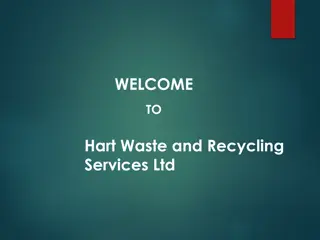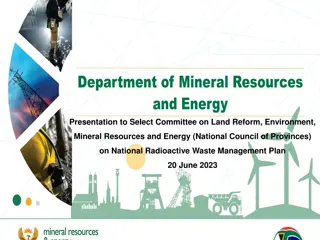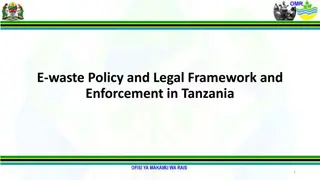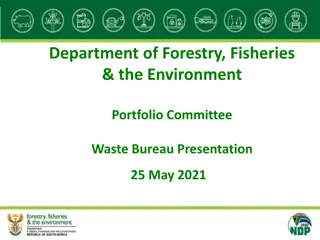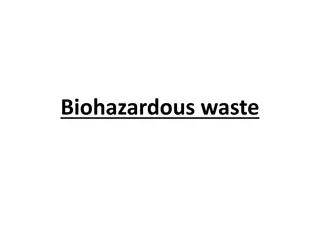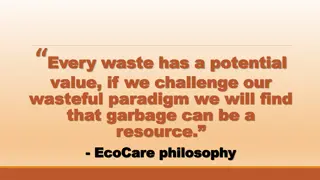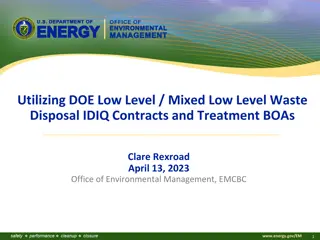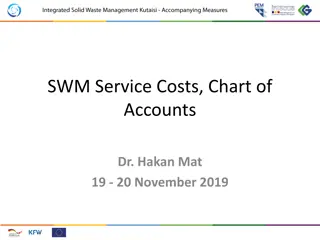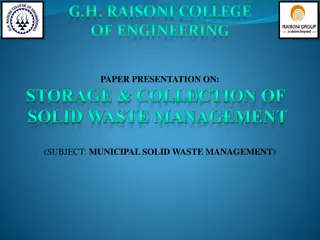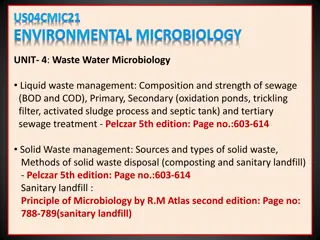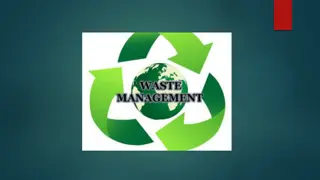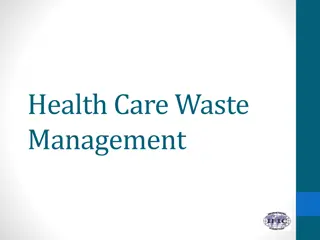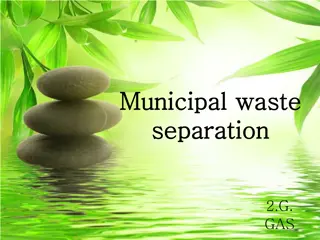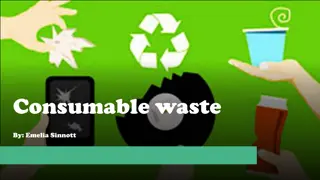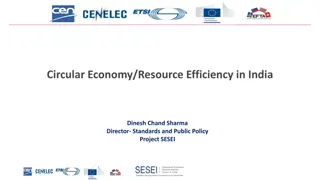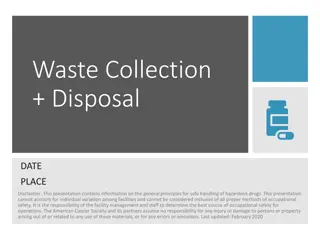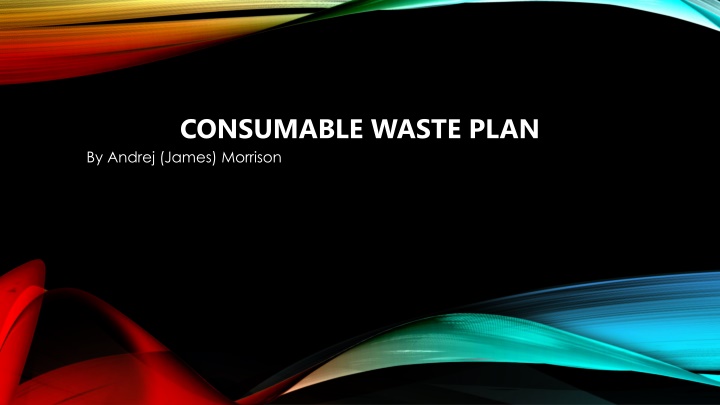
Food Packaging: Impacts and Waste Management
Explore the world of food packaging, from different types and materials used to the positive and negative effects on consumers. Discover what happens to packaging waste after food consumption and its long-term environmental impact.
Download Presentation

Please find below an Image/Link to download the presentation.
The content on the website is provided AS IS for your information and personal use only. It may not be sold, licensed, or shared on other websites without obtaining consent from the author. If you encounter any issues during the download, it is possible that the publisher has removed the file from their server.
You are allowed to download the files provided on this website for personal or commercial use, subject to the condition that they are used lawfully. All files are the property of their respective owners.
The content on the website is provided AS IS for your information and personal use only. It may not be sold, licensed, or shared on other websites without obtaining consent from the author.
E N D
Presentation Transcript
CONSUMABLE WASTE PLAN By Andrej (James) Morrison
HOW MUCH OF THESE FOODS COME IN DIFFERENT TYPES OF PACKAGING? Almost every food comes in packaged whether in a box, a bag, or a container. The only foods that don t usually come packaged are individual fruits and vegetables even if some stores pack them up in plastic bags.
WHAT KIND OF PACKAGING MATERIALS ARE USUALLY USED? Laminated Pouches Plastic Containers Thermoformed Products Tin Cans Parchment Paper Wet-Strength Paper bags Laminated Tubes Paperboard cartons Retort Pouches Paper-Foil Laminate Composite Cans Glass Containers Shrink Wrap
PACKAGING COUNTINUED Plastic Wrap Woven Sacks Reusable personal Bags Intermediate Bulk Containers Common Paper Bags Bubble Wrap Wooden Crates
WHY DO YOU THINK THAT ALL THESE MATERIALS WERE CHOSEN SPECIFICALLY FOR THE PRODUCTS PURCHASED?
HOW IS PACKAGING BOTH POSITIVE AND NEGATIVE FOR THE CONSUMER? We have become more dependent on packaging in our societies. Despite packaging's benefits, many negative ideas exist. As global population escalates, the demand for packaging increases and the need to deal effectively with the growing of plastic waste.
WHAT HAPPENS TO THESE PACKAGING MATERIALS ONCE WE HAVE EATEN THE FOOD INSIDE? If left out the packaging material starts to smell and fall apart. The leftover food scraps start to become moldy which causes the smell, this also causes the material to fall apart overtime. You won t notice the smell at first but overtime the smell will increase until it s horrible.
WHERE IS THE PACKAGING WASTE AFTER ONE DAY? ONE YEAR? ONE HUNDRED YEARS? Packaged waste usually ends up in garbage cans or food-waste bins then to land fills where it has the possibility to fall into oceans. This might kill sea-life if they eat it or swim through it, as it could get stuck in gills and airholes. If left alone it will float for years in open sea gradually being eaten by sea-life, killing animals, and polluting our ocean.
WHAT HAPPENS TO THE FOOD WASTE? It begins to decay and grow moldy overtime due to the build up of bacteria that s eating away at it. The food we waste ends up in landfills and produces greenhouse gases. When food is composted, carbon dioxide is released, but when the food is dumped in landfills, methane is released which heats up our planet twenty-five times more than carbon dioxide.
PROVIDE 3-4 SUGGESTIONS FOR WAYS THAT CONSUMERS CAN DECREASE THE AMOUNT OF WASTE WE CREATE. Prevent pollution caused by reducing the need to harvest new raw materials. Save energy and money. Reduce greenhouse gas emissions that contribute to climate change. Reduce the amount of waste that will need to be recycled or sent to landfills and incinerators.

